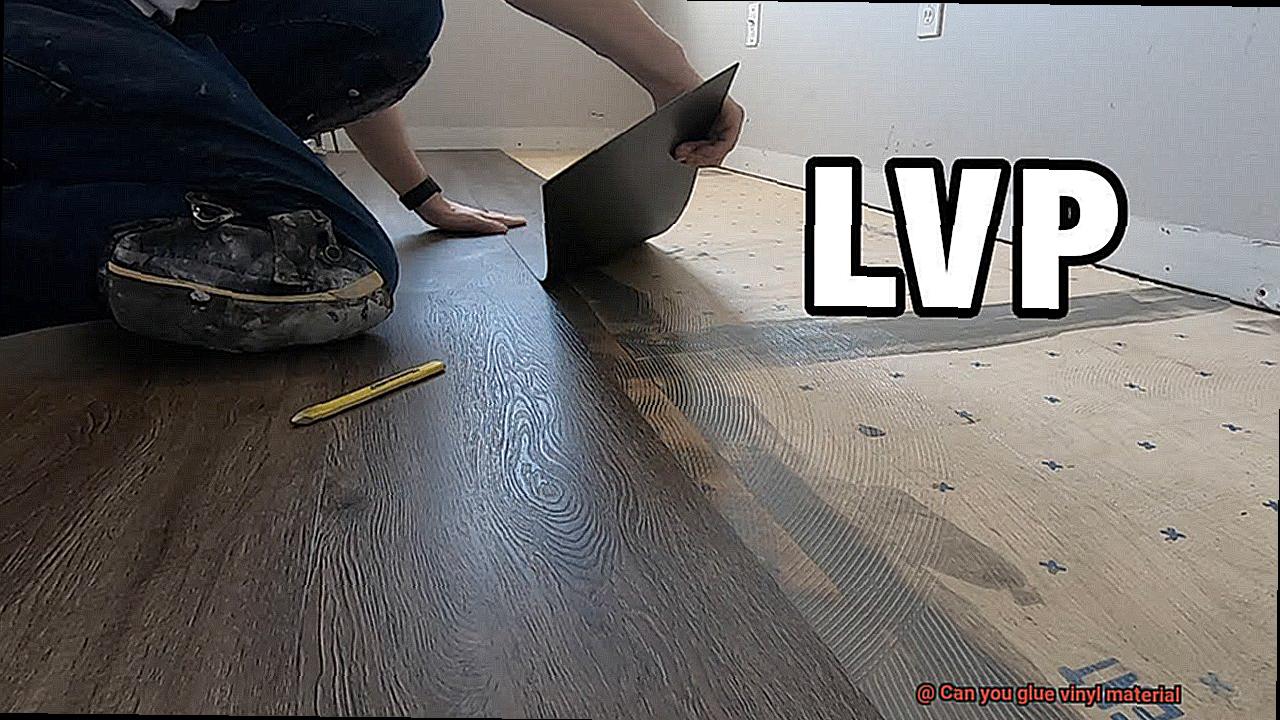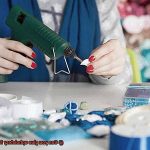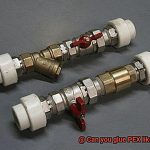Ever wondered if you can work your magic and glue vinyl material? Well, get ready to be amazed.
Vinyl is a superstar material that shines in upholstery, home decor, fashion accessories, and even signage. But let’s face it, accidents happen, and sometimes our beloved vinyl can tear or come undone.
In this blog post, we’ll uncover the secrets of gluing vinyl material together like a boss.
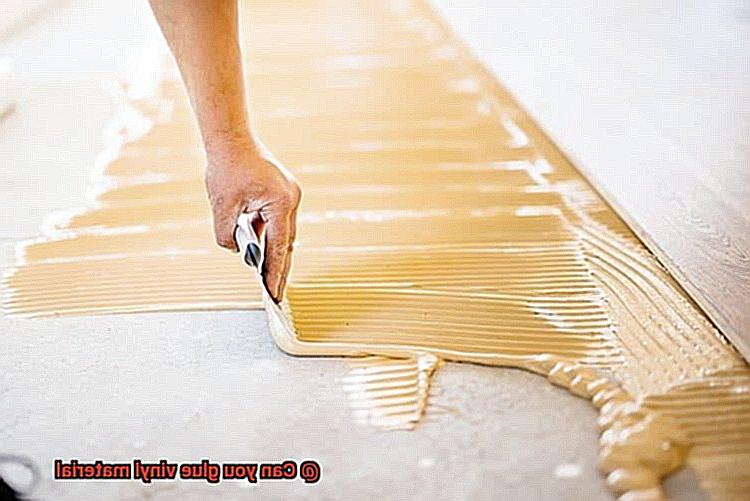
So, buckle up and join us on this epic journey as we explore the wonders of using glue for vinyl materials.
Adhesive Selection for Bonding Vinyl
Contents
- 1 Adhesive Selection for Bonding Vinyl
- 2 Preparing the Surface Before Gluing
- 3 Applying the Adhesive Properly
- 4 Considerations When Gluing Vinyl with a Protective Coating
- 5 Adhesives Suitable for Different Projects and Applications
- 6 Tips for Achieving a Strong Bond When Gluing Vinyl
- 7 Working with an Expert to Choose the Right Adhesive for Your Project
- 8 Conclusion
Vinyl, a versatile material used in a wide range of applications, poses a unique challenge when it comes to adhesive selection. In this comprehensive guide, we will explore the key factors to consider when choosing an adhesive for bonding vinyl, providing expert tips for achieving a strong and durable bond that withstands the test of time.
Determine the Type of Vinyl:
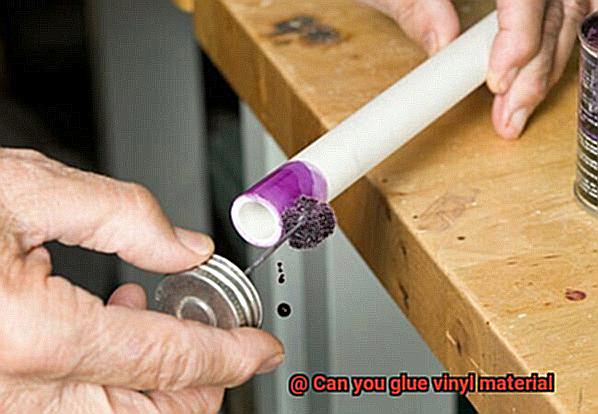
To ensure a successful bond, it is crucial to understand the characteristics of the vinyl you are working with. Whether it’s rigid vinyl, flexible vinyl, or vinyl-coated fabrics, each type requires specific adhesive formulations tailored to its unique properties.
Surface Preparation:
Proper surface preparation is paramount in achieving a strong bond with vinyl. Thoroughly clean the surface, removing any dust, dirt, or grease using a mild detergent or solvent. For enhanced adhesion, roughen up the surface slightly with sandpaper or an abrasive pad if necessary.
Consider Application Requirements:
Take into account the specific demands of your application. Factors such as temperature resistance, flexibility, and durability should guide your adhesive selection. Some adhesives excel in high-temperature environments, while others are better suited for flexible applications that require exceptional bond strength.
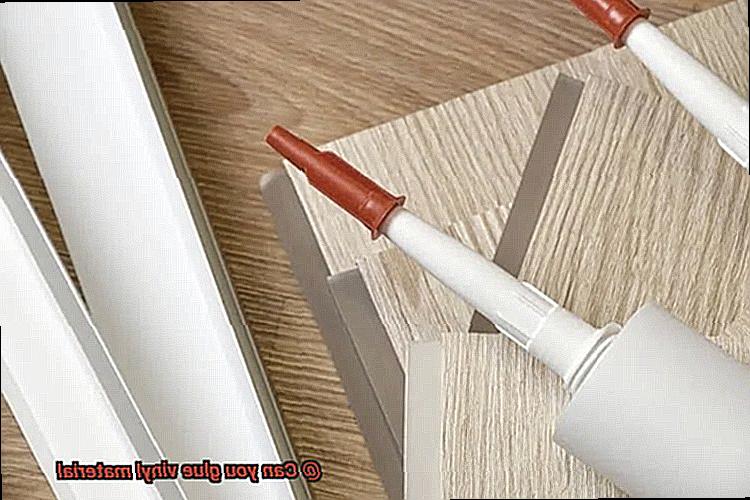
Adhesive Options:
- Solvent-based Contact Adhesive: When speed is of the essence or you need to bond large surfaces, solvent-based contact adhesives are your go-to choice. Apply the adhesive to both surfaces, allow it to dry until tacky, and then press the surfaces together for an instant and reliable bond.
- Water-based Adhesive: If you prioritize environmental friendliness and low VOC emissions, water-based adhesives are an excellent option. These adhesives offer good bonding strength and are particularly suitable for flexible vinyl materials.
- Vinyl-specific Adhesives: For optimal performance, consider using adhesives specifically designed for bonding vinyl materials. These specialized formulations provide excellent resistance to heat, moisture, and chemicals, ensuring a long-lasting bond that can withstand demanding conditions.
Compatibility:
Ensure the adhesive you choose is compatible with vinyl. Avoid adhesives that contain solvents or high levels of acidity, as they can potentially damage the material. Be sure to follow manufacturer recommendations for compatibility and proper application techniques.
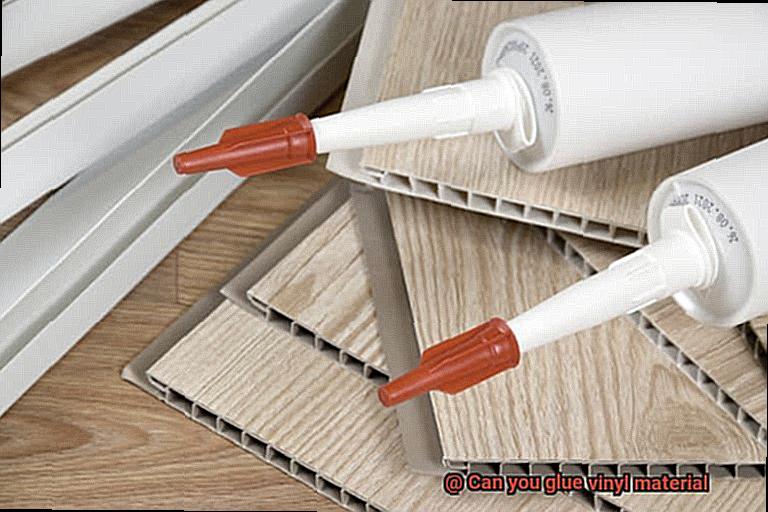
Preparing the Surface Before Gluing
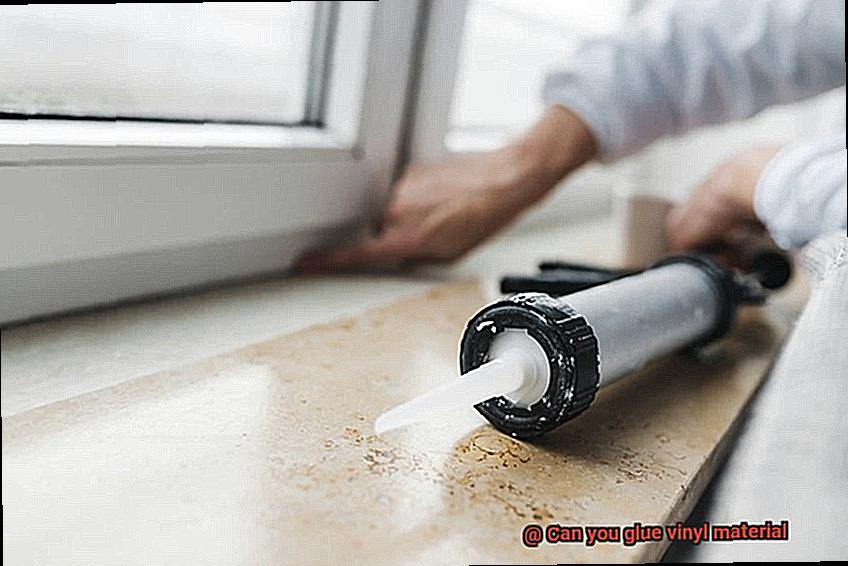
When it comes to gluing vinyl material, surface preparation is the secret ingredient that can make or break your project. A strong and long-lasting connection hinges on ensuring that the surface is immaculate, bone-dry, and free from any pesky contaminants.
In this comprehensive guide, we’ll walk you through the essential steps of preparing the surface before gluing vinyl material, guaranteeing a bond that will withstand the test of time.
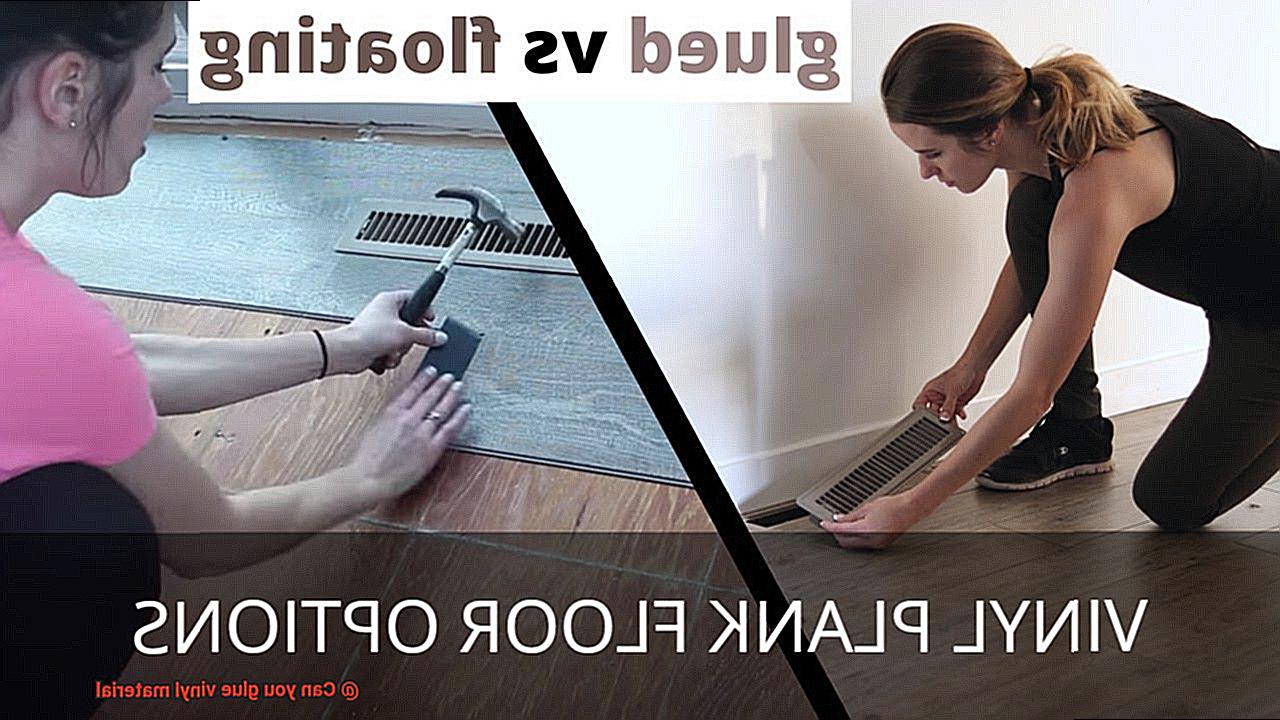
Step 1: The Clean Sweep
Begin by embarking on a thorough cleaning spree of the intended gluing surface. Utilize a gentle detergent or specialized vinyl cleaner to banish any dirt, oil, or residue that may lurk on the scene. Remember, though, to steer clear of harsh chemicals or abrasive cleaners that could unleash havoc on your precious vinyl material.
Step 2: Rough ‘n’ Tough
In certain cases, particularly when dealing with slick or glossy vinyl surfaces, you may need to roughen things up a bit to ensure optimal adhesion. Enter fine-grit sandpaper or a trusty sanding block. These trusty sidekicks will help you create a subtly rough texture that beckons the adhesive to grip with gusto. Just tread carefully, lest you venture into over-sanded territory and mar the vinyl surface.
Step 3: Priming Prowess (If Required)
Sometimes, your project calls for an extra layer of love in the form of primer. This superhero of the adhesive world works wonders in enhancing the bond between vinyl and glue. Porous vinyl materials or stubborn surfaces like PVC may require priming to ensure success. To determine if your application demands this extra step, consult the adhesive manufacturer’s instructions or enlist the guidance of an expert.
Step 4: The Drying Dance
After your masterful cleaning and priming (if applicable), patience becomes your virtue as you allow the surface to dry fully before applying the adhesive. Moisture, the notorious saboteur of bonds, can thwart your efforts if not given enough time to vacate the premises. So, bide your time and make certain that the surface is bone-dry before taking the next leap.
Step 5: The Test Drive
Before committing to gluing that entire vinyl extravaganza, embark on a small test patch adventure in a hidden or inconspicuous area. This reconnaissance mission allows you to gauge the adhesive’s compatibility with the surface and forestalls any unpleasant surprises like discoloration or damage. Remember, a little testing goes a long way in saving time and frustration down the road.
Applying the Adhesive Properly
Imagine the frustration of seeing your meticulously crafted vinyl project fall apart due to a weak adhesive bond. To prevent this disappointment, it is crucial to understand the importance of applying adhesive properly when working with vinyl material. In this comprehensive guide, we will delve into the nitty-gritty details of gluing vinyl, equipping you with the knowledge to ensure your projects stand the test of time.
Step 1: Prepare the Surface:
Before embarking on the gluing process, it is essential to ensure that your vinyl material is squeaky clean. Dust, dirt, and grease can hinder adhesion, compromising the bond’s strength. To prepare the surface, utilize a mild detergent or alcohol-based cleaner for a thorough cleanse. For an added boost in bonding strength, consider lightly sanding the surface to increase the bonding area.
Step 2: Choose the Right Adhesive:
Not all adhesives are created equal. To achieve optimal results, carefully select the appropriate adhesive based on your project’s requirements. Take into consideration factors such as environmental conditions, temperature range, and flexibility needs. Solvent-based adhesives, water-based adhesives, and pressure-sensitive adhesives each possess unique strengths and suitability for specific applications.
Step 3: Follow Manufacturer’s Instructions:
Do not underestimate the importance of this step. Before immersing yourself in the gluing process, take a moment to thoroughly read and understand the manufacturer’s instructions. Each adhesive may have specific application methods and drying times for optimal results. Pay close attention to requirements such as curing times or temperature ranges to ensure an ideal bond.
Step 4: Apply with Precision:
Now it’s time to get down and sticky. Utilize a clean applicator such as a brush or roller to apply a thin and even layer of adhesive onto both the vinyl material and the bonding surface. Exercise caution to avoid excessive glue application, as it can lead to seepage or uneven bonding. Remember, less is more when it comes to adhesive application.
Step 5: Press and Smooth:
Align the vinyl material with the bonding surface and firmly press it in place. Begin from one end and gradually smooth out any air bubbles or wrinkles as you work your way towards the opposite end. Applying even pressure is crucial for ensuring proper contact between the adhesive and vinyl, guaranteeing a strong bond.
Step 6: Patience is a Virtue:
After adhering the vinyl material, exercise patience by allowing ample drying or curing time. The duration will vary based on the adhesive type, environmental conditions, and the size of the bonded area. During this period, avoid subjecting the bond to unnecessary stress or pressure to prevent potential damage.
Considerations When Gluing Vinyl with a Protective Coating
When it comes to gluing vinyl with a protective coating, there are several important considerations to keep in mind. These considerations will help you achieve a strong and durable bond between the vinyl and the protective coating, ensuring that your adhesive dreams become a reality. So, buckle up and get ready for a wild ride full of tips and tricks.
- Understand the Protective Coating: The first consideration is to understand the type of protective coating on your vinyl. Different coatings can have different levels of resistance to adhesion, so it’s crucial to do your research and choose an adhesive that is specifically designed for bonding vinyl materials. Using the wrong adhesive can lead to a glue disaster that will leave you feeling stuck (pun intended).
- Prepare the Surface Like a Pro: Once you’ve selected the perfect adhesive, it’s time to prepare your vinyl surface. Cleanliness is key here, my friends. Ensure that your vinyl surface is free from any dirt, dust, or oils that could hinder adhesion. A little soap and water or a mild solvent should do the trick. For an extra boost, give your vinyl surface a gentle sanding with some fine-grit sandpaper. This will create a slightly rougher surface for the adhesive to grip onto, ensuring a stronger bond.
- Apply the Adhesive with Precision: Now it’s time for the main event – applying the adhesive. Remember, following the manufacturer’s instructions is absolutely essential. They know what they’re talking about, trust me. Apply a consistent and even layer of adhesive, neither too much nor too little. And don’t forget about curing time. Some adhesives require a specific amount of time to fully cure and reach their maximum bond strength. Patience is key here, my friends.
- Think Outside the Box for an Impeccable Bond: Sometimes, a little extra effort is needed to achieve an impeccable bond. Consider using heat or pressure to activate the adhesive and enhance its bonding properties. You can also let the adhesive cure for a longer period before subjecting your creation to stress or strain. Remember, a little extra TLC goes a long way.
- Ensure Long-Term Durability: Last but not least, let’s talk about the long-term durability of your adhesive bond. Exposure to sunlight, temperature variations, and moisture can all be potential threats to your bond’s strength and integrity. So, choose an adhesive that is specifically designed for outdoor or high-stress applications. This will ensure that your bond remains rock solid even in the face of adversity.
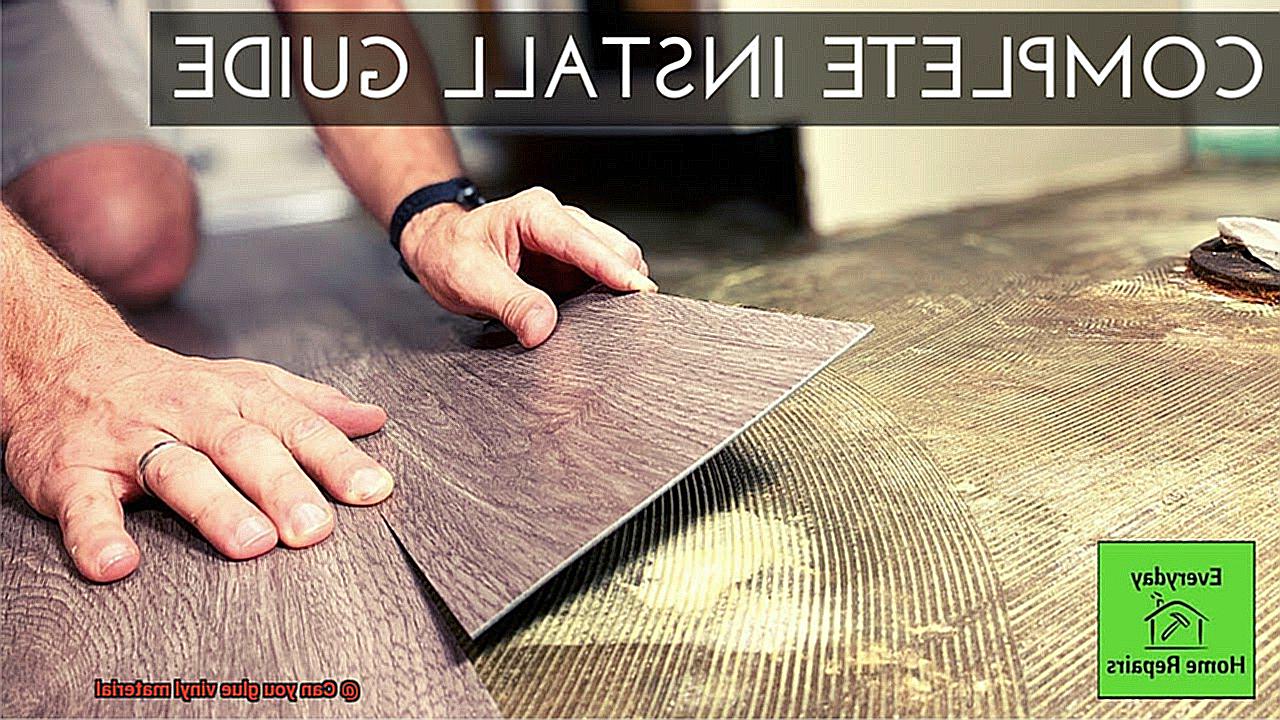
Adhesives Suitable for Different Projects and Applications
Adhesives are the unsung heroes of the crafting and construction world, providing the glue that holds everything together. When it comes to bonding vinyl material, choosing the right adhesive is essential for achieving a strong and durable bond. Let’s dive into the world of adhesives and explore the options suitable for different projects and applications.
Understanding the coating on your vinyl material is a crucial first step. Vinyl is often coated with a protective layer that can affect the adhesion of the adhesive. Some coatings are more receptive to certain types of adhesives, so it’s important to know what kind of coating you’re working with. Consult the manufacturer’s instructions or do a small test on a hidden area to determine compatibility.
Once you’ve determined the coating, it’s time to prepare the surface for bonding. Clean the vinyl surface thoroughly using a mild detergent and water to remove dirt, oils, or residue that could interfere with the adhesive’s ability to bond. After cleaning, ensure the surface is completely dry before applying the adhesive.
Now, let’s explore some of the adhesive options suitable for bonding vinyl material:
- Vinyl cement: This specialized adhesive is formulated specifically for bonding vinyl surfaces. It softens the surface of the vinyl, allowing it to fuse together when pressure is applied. Vinyl cement provides a durable bond and is commonly used in applications such as repairing vinyl upholstery or bonding vinyl flooring tiles.
- Cyanoacrylate glue: Also known as super glue or instant adhesive, cyanoacrylate glue is a fast-setting adhesive that forms a strong bond between surfaces. It works well on vinyl due to its ability to bond different types of materials, including plastics. However, be cautious as it can sometimes leave a visible residue or discoloration.
- Multi-purpose adhesives: These water-based adhesives provide a strong bond without damaging the vinyl surface. They are often used in craft projects or DIY applications where versatility and ease of use are important factors.
Now that you have an overview of the different types of adhesives, it’s time to apply them with precision. Follow the manufacturer’s instructions carefully, paying attention to factors such as the recommended drying time and application method. Applying too much or too little adhesive can affect the bond strength, so take your time and apply it evenly across the surface.
For an impeccable bond, consider using additional methods to enhance the strength. Heat can be used to activate certain adhesives or mechanical fasteners such as staples or clips can be added for extra reinforcement. Just ensure these methods are compatible with your specific project and won’t damage the vinyl material.
Tips for Achieving a Strong Bond When Gluing Vinyl
When it comes to gluing vinyl, achieving a strong bond is essential for the longevity and durability of your project. Whether you’re repairing torn furniture or creating artsy crafts, following these tips will help you create a bond that’s as strong as a superhero.
Choose the Right Adhesive:
Just like superheroes need the right gear, vinyl needs the right adhesive. Look for adhesives specifically labeled as “vinyl adhesive” or “vinyl-specific glue.” These specialized glues are designed to work their magic on vinyl materials, creating a bond that’s super strong and long-lasting. Using the wrong adhesive can lead to weak bonds or even damage to your vinyl.
Prep the Surface Properly:
Before applying any adhesive, it’s crucial to prepare the surface properly. Make sure your vinyl is squeaky clean by using a mild detergent and water solution to wipe away any dirt, dust, or grease. This step ensures that no contaminants interfere with the bonding process. After cleaning, allow the surface to air dry completely. A clean and dry surface provides an optimal foundation for a strong bond.
Roughen It Up:
If you want to take your bond to superhero levels, give your vinyl surface a little rough love. Gently sand the area with fine-grit sandpaper or a sanding block to create tiny scratches. These scratches provide more surface area for the adhesive to grip onto, resulting in a stronger bond. Be careful not to overdo it – you don’t want to damage or distort the vinyl.
Apply with Precision:
To achieve the best bond, apply your adhesive evenly and smoothly. Use a small brush or sponge applicator to spread the glue in a thin layer on both surfaces you want to stick together. Follow the instructions on the adhesive package for the right technique and drying time. Applying too much adhesive can lead to messiness and longer drying times, so use caution and apply with precision.
Apply Pressure:
Just like superheroes know that sometimes you need to apply pressure to get things done right, the same goes for gluing vinyl. After applying the adhesive, press down firmly on the vinyl to ensure it sticks to the glue. You can use a roller or even some heavy objects to provide that extra oomph. Applying pressure helps the adhesive make maximum contact with the vinyl, resulting in a stronger bond.
Consider Climate Conditions:
Just like superheroes have their kryptonite, extreme temperatures and high humidity can weaken your bond. Make sure you’re gluing vinyl in the right environment by following the adhesive manufacturer’s recommendations for temperature and humidity conditions. Extreme cold or heat can affect the adhesive’s performance and compromise the bond. So, be mindful of the climate when working on your vinyl project.
Working with an Expert to Choose the Right Adhesive for Your Project
With a wide range of adhesive options available, it can be overwhelming to determine which one will provide the strongest and most durable bond for your specific project. That’s where an adhesive specialist comes in.
An expert in adhesives can offer valuable insights and recommendations based on their knowledge and experience with different types of adhesives. They can help identify the specific requirements of your project and suggest the most suitable adhesive that will adhere well to vinyl material.
One of the main reasons why it’s important to seek professional advice when selecting glue for a project is because of the unique challenges that come with bonding vinyl. Vinyl is a synthetic material with a smooth and non-porous surface, making it difficult to bond. Therefore, it is crucial to choose an adhesive that is specially formulated to work effectively with vinyl.
There are different types of adhesives available, such as solvent-based adhesives, water-based adhesives, and pressure-sensitive adhesives. Each type has its own advantages and considerations, and an expert can guide you in selecting the most appropriate option for your project.
For example, if you need a strong bond, an expert may recommend a solvent-based adhesive with high bond strength. On the other hand, if you’re working on a project that involves vinyl flooring installation, a pressure-sensitive adhesive might be more suitable as it allows for flexibility to accommodate movement or stress.
An adhesive specialist can also provide tips on surface preparation, application techniques, and curing times to ensure optimal results. They can help you avoid common mistakes or pitfalls when working with vinyl materials, saving you time, money, and potential headaches.
3SRSWODFXOw” >
Conclusion
Yes, you can definitely glue vinyl material.
With a strong adhesive specifically designed for vinyl, you can ensure a durable and long-lasting bond.

